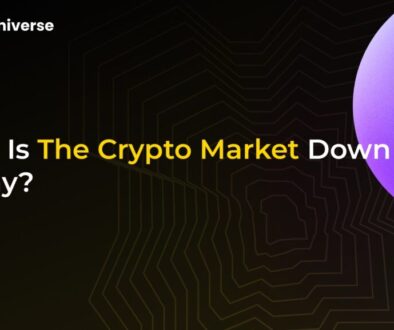Ethereum’s Fusaka Hard Fork: Unpacking the EVM Object Format (EOF) Controversy

Ethereum’s Evolution Continues: Enter the Fusaka Hard Fork
Ethereum, the world’s leading smart contract platform, is no stranger to evolution. Regular network upgrades, known as hard forks, are essential for improving its efficiency, security, and capabilities. The next significant milestone on the horizon is the Fusaka hard fork, tentatively scheduled for the third or fourth quarter of 2025. While upgrades often bring excitement, Fusaka carries a particular point of contention: the proposed implementation of the EVM Object Format (EOF).
This upgrade promises major changes to the Ethereum Virtual Machine (EVM), the core component that executes smart contracts. But the path forward is fraught with debate. Let’s dive into what Fusaka entails, understand the technicals of EOF, and explore the controversy surrounding its inclusion.
What is the Fusaka Hard Fork?
The Fusaka hard fork is a planned network upgrade for the Ethereum blockchain. Following the Pectra upgrade, Fusaka aims to introduce a set of significant changes primarily focused on the EVM. The target launch window, as indicated by Ethereum Foundation members, is Q3 or Q4 2025. While the exact scope is still under discussion by core developers, the central piece intended for this upgrade is the EVM Object Format (EOF).
Understanding the EVM Object Format (EOF)
At its core, the EVM Object Format (EOF) represents a fundamental overhaul of how smart contract code is structured and executed on the Ethereum network. It’s not just a minor tweak; it involves a package of around 12 Ethereum Improvement Proposals (EIPs) designed to modernize the EVM.
Key Technical Changes with EOF:
- Structured Code Container: EOF introduces a new, more organized container format for smart contract bytecode.
- Code and Data Separation: It clearly separates the executable code sections from the data sections within a contract. This contrasts with the current, more monolithic structure.
- Bytecode Validation: The new format allows for bytecode validation *before* deployment. This means certain errors or structural issues can be caught upfront, preventing the deployment of potentially faulty contracts.
- Deprecating JUMPDEST Analysis: EOF aims to remove the need for complex analysis of valid jump destinations during execution, simplifying EVM operations.
- New Opcodes: It introduces new EVM instructions (opcodes) to support the new structure and enable enhanced functionality.
Intended Benefits of EOF:
- Enhanced Efficiency: By simplifying EVM operations and enabling better code optimization, EOF aims to make smart contract execution faster and potentially cheaper (less gas).
- Improved Security: Upfront code validation and clearer structure can reduce the risk of certain types of vulnerabilities and make contracts easier to audit.
- Better Developer Experience: A clearer structure and the potential for better tooling could simplify the smart contract development and deployment process.
- Future-Proofing: Supporters argue that EOF lays a necessary foundation for future EVM improvements and makes introducing subsequent upgrades easier.
The Heart of the Debate: The EOF Controversy
Despite the potential benefits, the inclusion of EOF in the Fusaka upgrade (or any upgrade) has sparked significant debate within the Ethereum developer community. The controversy highlights the inherent challenges of evolving a complex, decentralized system with billions of dollars at stake.
Arguments Against EOF:
- Complexity Concerns: Critics argue that the EOF proposal, encompassing numerous EIPs, introduces excessive complexity to the EVM and the broader Ethereum protocol. This complexity could make client implementation harder, increase the maintenance burden, and potentially introduce new, unforeseen bugs or security vulnerabilities.
- Is it Necessary?: Some developers question whether the benefits offered by EOF justify such a large-scale change. They suggest that similar improvements might be achievable through smaller, less disruptive EIPs.
- Potential for Disruption: Implementing such a fundamental change carries risks. Concerns exist about ensuring network stability during and after the upgrade and the potential impact on existing tools and infrastructure that interact with the EVM.
- Community Consensus: A segment of the community feels that pushing forward with EOF without broader consensus could be detrimental. The debate led to EOF being pushed back from the earlier planned Pectra upgrade to Fusaka, indicating the strength of the opposition.
Arguments For EOF:
- Efficiency and Cost Reduction: Proponents strongly believe that EOF’s structural changes will lead to tangible performance improvements and reduced gas costs for users interacting with new contracts.
- Elegance and Cleanliness: Supporters see EOF as a more elegant and robust way to structure bytecode, leading to cleaner, more maintainable, and verifiable smart contracts.
- Essential for Future Growth: Many core developers view EOF as a critical prerequisite for future EVM enhancements. They argue that without this foundational upgrade, adding more advanced features later will become increasingly difficult and complex.
- Long-Term Vision: The push for EOF reflects a long-term vision for a more robust, efficient, and developer-friendly EVM, even if it requires significant effort in the short term.
Navigating the Decision: What’s Next for EOF and Fusaka?
The decision-making process for Ethereum upgrades involves extensive discussion among core developers, researchers, and the wider community. The debate around EOF is a prime example of this process in action.
As of now, Fusaka is targeted for late 2025, with EOF being a major, albeit contentious, planned component. Core developer calls and forums are actively discussing the specific EIPs to be included and refining the implementation details. The intense discussion means that the final scope of Fusaka, including the fate of the full EOF implementation within it, remains subject to the consensus-building process inherent to Ethereum’s governance.
The outcome will depend on ongoing technical evaluations, risk assessments, and the ability of proponents to address the concerns raised by critics effectively.
Conclusion: A Crossroads for the EVM
The Fusaka hard fork and the debate surrounding the EVM Object Format represent a critical juncture for Ethereum. EOF promises significant advancements in EVM efficiency, security, and future adaptability. However, the concerns regarding its complexity and potential risks are valid and highlight the careful balancing act required when upgrading a global, decentralized network.
Whether EOF makes it into Fusaka in its entirety, in part, or gets deferred again remains to be seen. What is clear is that the discussion itself is healthy, showcasing Ethereum’s robust, albeit sometimes contentious, development process. Watching the progress of Fusaka and the resolution of the EOF debate will be key for anyone involved in the Ethereum ecosystem.


